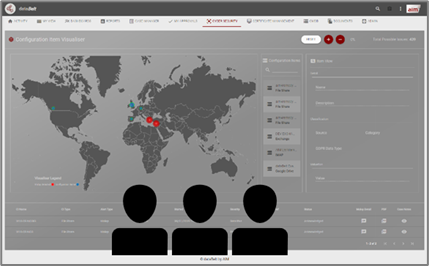A UK Police Service was struggling to manage the huge volume of data it had accumulated over the years, for investigative proposes as well as ensuring regulatory compliance. Manual processes were no longer an option – new technology was needed to assist the Police Service with digital forensics. Aim was engaged to assist.
Situation
A UK Police Service was struggling to manage the huge volume of data it had accumulated over many years, for both investigative purposes and regulatory compliance.
For investigations, there were two key problems. Firstly, data sources used in criminal investigations were hosted on different systems – many legacy – meaning that it was difficult if not impossible to cross refer relevant datasets when compiling a criminal case. Secondly, police personnel were wasting many hours reviewing CCTV footage, looking for evidence or leads relevant to crimes that had been committed. The lack of access to key data intelligence had led to prosecution failures.
Regulatory compliance required the Police Service to comply in two key areas. Firstly, the Home Office initiative MOPI (Management of Police Information) was aimed at ensuring Police Services didn’t hold onto data unnecessarily, beyond its retention date and in some cases unlawfully. This was endorsed by the UK Information Commissioner’s Office (ICO) that mandated a code of practice for Police Services. Secondly, was the need to provide a robust data protection system that enabled swift and accurate tools to support processes such as data classification, data subject access requests (DSARs), data protection impact assessments (DPIAs) and data protection breach reporting.
Aim was invited to demonstrate its platform dataBelt® as a data forensic analysis solution to meet the challenges of the Police Service.
Solution
The Aim team provided a compelling series of use cases demonstrating AI-enabled dataBelt®’s powerful discovery and analytical tools. The Police Service digital team remarked that it was one of the best demonstrations they had ever seen.
Firstly, the Police Service was shown how dataBelt® could discover, index and classify data from all data sources and platforms and create a virtualised data lake – ensuring the original dataset remained intact and unaffected. This included structured data, unstructured data, images, videos, audio files. From this data lake, advanced searches could cross refer and assemble related data relevant to an investigation – ensuring that important intelligence would not be overlooked in a case. Secondly, using dataBelt®’s Keras Tensorflow machine learning, models were built to show how a custody suite of photographs could be weeded using specific business rules – ensuring there was no data hoarding, and complying with the MOPI initiative. Tensorflow convolutional networks were then used to interrogate CCTV footage to identify images of suspect cars.
For data protection, dataBelt® demonstrated its powerful GDPR capability providing a complete forensic solution and a data protection dashboard so all aspects of data protection could be monitored and measured through a ‘single pane of glass’.
The Police Service was so impressed that following a successful Proof of Concept, dataBelt® was chosen as their digital forensics tool. Selection was also made of the dataBelt® cyber security module to enable a 360° view of police data mapped to potential malicious and suspicious behaviours.

Results
The analysis and outputs that Aim produced via dataBelt® delivered on all aspects of the Police digital forensics programme and created excellent results that would have taken the Police weeks or months to perform manually - if possible at all. The platform also provided the Police with confidence in its ability to access its data quickly and completely, taking away any risk of error and oversight.
The Police estimated that dataBelt® saved 70 - 90% of police time that had been spent manually processing and searching data, and reduced the risk of error by 95%.

